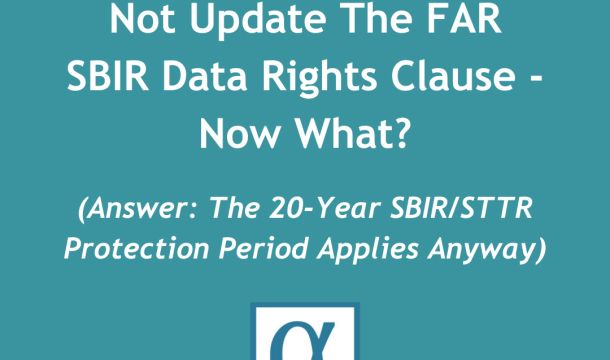The GovCon Bulletin™
SBA Raises Small Business Size Standards For Federal Government Contractors
Earlier today, on March 31, 2022, the U.S. Small Business Administration (SBA) issued a series of Final Rules that raised receipts-based small business size standards for industries in a number of NAICS Sectors.
Small business size standards are thresholds or cutoffs for determining how big a company can be and still be considered a small business. Depending on the industry, a small business size standard is expressed either as an average annual receipt amount or as an average employee count.
In September 2010, Congress passed the Small Business Jobs Act of 2010 that required the SBA to review small business size standards every five years and make necessary adjustments to reflect current industry and market conditions. In 2016, the SBA completed the first five-year review of all size standards — except agricultural business size standards, which were previously set by Congress — and adjusted size standards in several industries.
More recently, the National Defense Authorization Act for Fiscal Year 2017 (NDAA 2017), instructed the SBA to establish size standards for all agricultural businesses in the same way it does for other industries and to include them in its five-year rolling review procedures. As a result, in this latest five-year review, the SBA evaluated the size standards for all agricultural industries, including forty-six (46) industries that were reviewed for the first time.
Also in this latest 5-year review, rather than revise all size standards for all industries at the same time, the SBA chose to revise size standards in four groups. Each group is comprised of industries within various NAICS Sectors that use the same size measurement (i.e., average employees or average annual receipts). Earlier today, the SBA issued four separate Final Rules that correspond to four groups and that set forth the size standard revisions to certain industries within the corresponding NAICS Sectors.
NAICS Sectors 11, 21, 22, and 23
In one Final Rule, the SBA raised the receipts-based small business size standards for sixty-eight (68) industries in sectors related to Agriculture, Forestry, Fishing and Hunting (NAICS Sector 11), Quarrying, and Oil and Gas Extraction (NAICS Sector 21), Utilities (NAICS Sector 22), and Construction (NAICS Sector 23). The final rule adopted all of the size standards that the SBA proposed in an October 2020 proposed rule without any changes, with the exception of an increase in the size standard for Forest Fire Suppression and Fuel Management Services for which the SBA adopted a higher size standard of $30 million instead of the proposed $25 million.
NAICS Sectors 61, 62 , 71, 72, and 81
In a second Final Rule, the SBA increased the receipts-based small business size standards for seventy (70) industries in sectors related to Education Services (NAICS Sector 61), Health Care and Social Assistance (NAICS Sector 62), Arts, Entertainment and Recreation (NAICS Sector 71), Accommodation and Food Services (NAICS Sector Sector 72), and Other Services (NAICS Sector 81). This final rule adopted all of the size standards that the SBA proposed in a November 2020 proposed rule without any changes.
NAICS Sectors 54, 55, and 56
In a third Final Rule, the SBA increased the receipts-based small business size standards for forty-six (46) industries in sectors related to Professional, Scientific and Technical Services (NAICS Sector 54), Management of Companies and Enterprises (NAICS Sector 55), and Administrative and Support and Waste Management and Remediation Services (NAICS Sector 56). This final rule also adopted all of the size standards that the SBA proposed in a November 2020 proposed rule without any changes.
NAICS Sectors 48-49, 51, 52, and 53
In its last Final Rule, the SBA increased the receipts-based small business size standards for forty-five (45) industries in sectors related to Transportation and Warehousing (NAICS Sectors 48-49), Information (NAICS Sector 51), Finance and Insurance (NAICS Sector 52), and Real Estate and Rental and Leasing (NAICS Sector 53). This final rule adopted all of the size standards that the SBA proposed in an October 2020 proposed rule without any changes.
Although it is possible for size-standards or caps to be adjusted downward, which invariably would have the effect of pushing businesses at the margins out of their small business categories, it should be noted that in response to the economic impacts of the COVID-19 pandemic, the SBA in this latest five-year review chose only to increase size standards where the data suggested increases were warranted and to retain current size standards where the data suggested that either lowering them or keeping them the same would be appropriate.
The Final Rules take effect on May 2, 2022. Government contractors should review the revised SBA size standards to see if they now qualify as small businesses for federal government contracting purposes.
To read other articles from The GovCon Bulletin™ go here.



